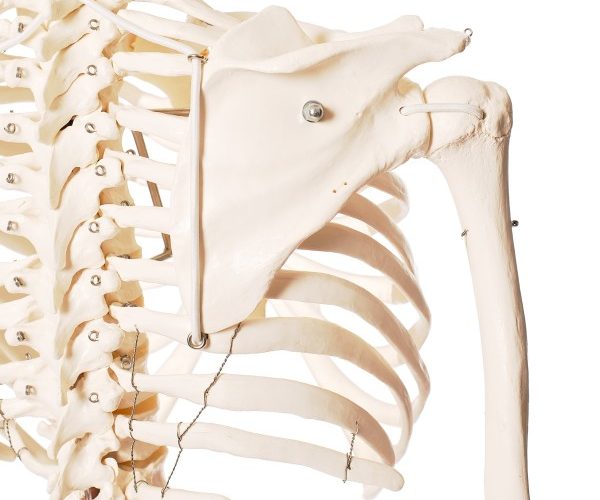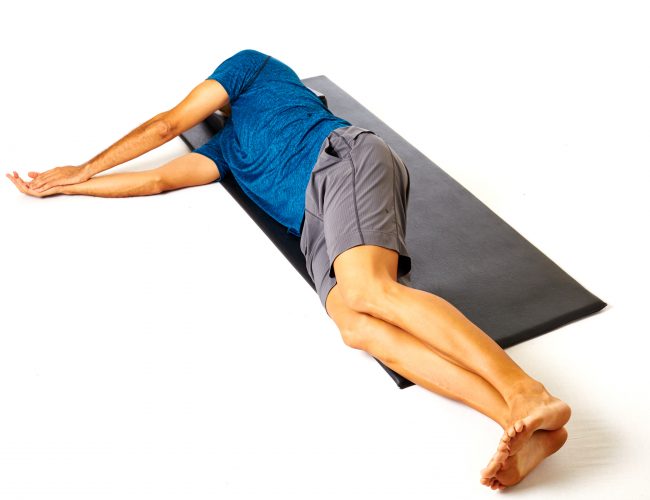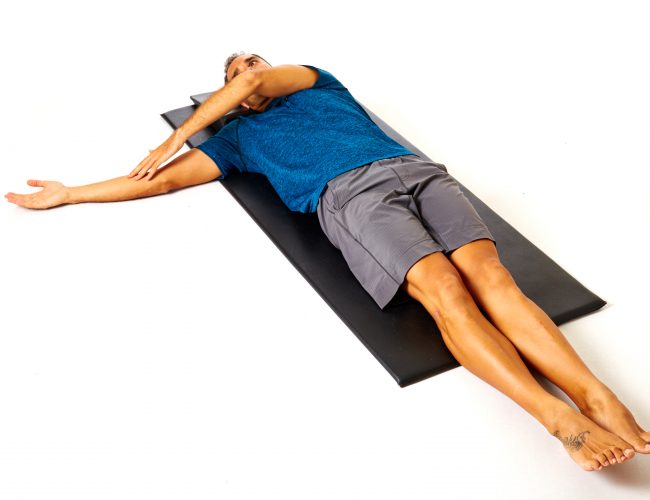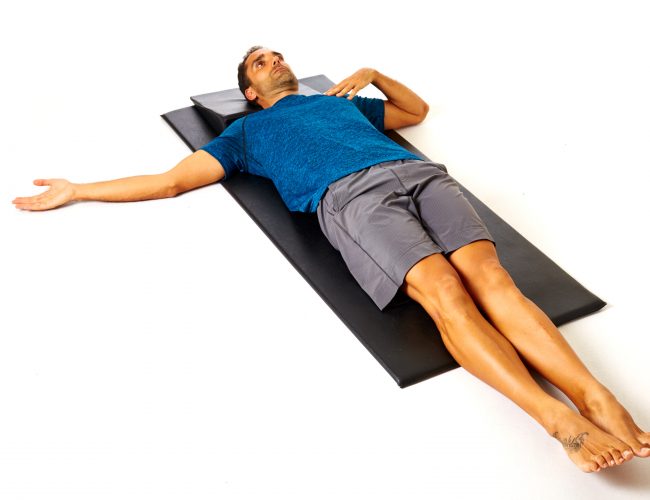Ankylosing spondylitis – treatments and pilates exercises
Sat,Aug 25, 2018 at 08:52PM by Carla Mullins
What is ankylosing spondylitis?
Ankylosing spondylitis (AS) is an autoimmune condition affecting the joints of the spine, particularly the sacroiliac joint (SIJ), but can affect all parts of the spine and other joints within the body. Ankylosing spondylitis symptoms can include:
// Stiffness. One client described the sensation that their back moved like a plank of wood. In advanced cases the spine can fuse.
// Pain in the buttocks, linked to inflammation of the joints. See some exercises ideas at the end of the article.
// Inflammation in the eye, known is uvitis, which can result in red, sore eyes and blurry vision.
// Pain in the spine, usually at its worst in the mornings, with pain being worse after rest.
// The pain improves after exercise or movement.

Fusion in the thoracic spine is a common problem for people with Ankylosing Spondylitis
There is a strong genetic link for the disease and many people with the condition are shown to have a particular gene called HLA-B27. However, having this gene does not definitively mean you will have AS. One of my lovely clients has this gene but no clinical expression of ankylosing spondylitis symptoms and the subsequent ankylosing spondylitis diagnosis. Her awareness of the gene has meant that she is particularly attentive to the importance of moving her spine. Unusually for autoimmune conditions, men are three times more likely than women to have the disease.
The condition is inflammatory and falls under the broad category of arthritis and as such is treated by a rheumatologist who will conduct blood tests and other tests.
When the disease progresses it can result in fusions between vertebrae the spine, particularly in the SIJ and at the front of the vertebrae of the thoracic spine. This causes hunched spinal posture often associated with advanced osteoporosis. It is important to ensure that you have been given the correct diagnosis, as the way you would work with this condition is very different to how you would manage osteoporosis. The hunched position is associated with fusions of the vertebrae which is very different to the wedge fractures that occur in osteoporosis.
The images below show what can happen with this disease (acknowledgement and thanks to Healthline).

Medications for ankylosing spondylitis and their impact on a movement class?
There are a number of different medications that can be used in these cases. It is important to be aware of the class of these drugs and any side effects they may have on the body.
// Non-steroidal anti-inflammatory drugs: Decreases inflammation, reduces fever and as a secondary effect reduces pain. In the short term they can encourage tissue repair, however long term use can have the opposite effect. These medications can also have an impact on gut health and as a result can cause all a variety of problems for peoples digestion and manifest as issues such as reflux. As a result it is important to check any digestive or gastrointestinal complications that may affect abdominal exercises. I tend to be a little careful with these clients about lying flat on their back and tend instead to prop them up a bit, as I would with a women in the last term of their pregnancy.
// Immuno-suppressive drugs: Reduces immune response and there can be associated risks of making the person extremely vulnerable to infections like colds, bacteria, etc. Therefore the studio needs to have very strict policies about client and staff coming to the studio feeling a lit bit sick. In those circumstances it is not appropriate for these people to be sharing a space with those clients who are imuno-suppressed.
// Steroids: These drugs modify or simulates hormone effects, often to reduce inflammation or for tissue growth and repair. However, long term steroid use can have issues on weight gone and bone density. It is important to check how long a client has been using these steroid based medications and determine if there has been any consequences associated with the loss of bone density.
Exercises and considerations for ankylosing spondylitis
Stretching is one of the recommendations for working with this condition. It is, however, important to remember that passive stretching alone is not enough. There needs to be a balance between:
// Unloading of the joints through traction style concepts, e.g. use of the velcro straps series on the Reformer or Trapeze table and encouraging the space that occurs with good isometric strengthening work.
// Eccentric lengthening work, which is the benefit of work like pilates and Gyrotonic.
// A good balance between mobility and stability throughout the class.
// The level of mobility work required will depend on the location of inflammation and the degree of fusion which can occur at later stages of the disease. Fusion is particularly common in the SIJ region and in the neck and thoracic spine. As a result there can be associated nerve compression and problems that should be checked with a physiotherapist, osteopath or other manual therapist. When a person is complaining about burning or numbness in the hands or feet it is important for them to be checked to make sure there is no permanent damage to the nerve. There are a lot of precautions about spinal manipulation with these clients so it is very important that they are seen to by an appropriate therapist.
As with many autoimmune conditions clients can be affected by temperature regulation and it is important to check with the client as to their preferences for room heating or cooling, as this can affect their comfort and joint mobility. It is important to always check with the client regarding these issues, and also their pain tolerance.
Below are some simple ideas that we incorporate into a class for our clients with AS, which include the considerations listed below. The exercises are in videos and images at the end of this article and are covered in more detail in our Anatomy Dimensions courses which include Spine & Torso, Autoimmune Conditions and Cancer course (taught in English and Spanish). These inflammatory autoimmune courses will be covered in more detail in our course Springing this Joint which will be released in 2019.
// Ideas for spinal mobility, particularly in the SIJ rejoin e.g. assisted roll down.
// Ideas for isometric strengthening of the spine e.g. wall elephant or long box reformer press outs (Reformer manuals)
Assisted roll down
Assisted rotational exercises such as:
// Twisted Angel, see video below and detailed in the mat and movement manual.
// Modified Book Openings, see video below and detailed in the mat and movement manual.
// Floor Snake from the Feldenkrais practice.
Floor snake exercises



Here are some nice exercises to help release the sacrum, whilst at the same time working on stability.
This is also a good routine to try as part of the focus on achieving lumbar sacral mobility.
to purchase Makarlu Shop Makarlu
This video is from Arthritis health and it shows the process of inflammation for the spine.
https://www.arthritis-health.com/video/ankylosing-spondylitis-video
Body Organics and Body Organics Education provide pilates, manual therapies and movement practices to healthy and not so healthy clients. Our philosophy is that good quality movement teachers are multidisciplinary and curious in their approach and focus on client outcomes. Our Anatomy Dimensions courses are run in Australia, USA, South America and Spain annually and we seek to accommodate requests for training in specific locations. Some of our training and repertoire manuals are available online for those who cannot attend our trainings or are wanting to find out more. Our focus is on providing critical thought and understanding of movement, anatomy and pathology to empower teachers and clients to find solutions. For pilates classes, Body Organics trained teachers or course information please feel free to contact us.
 0
0 